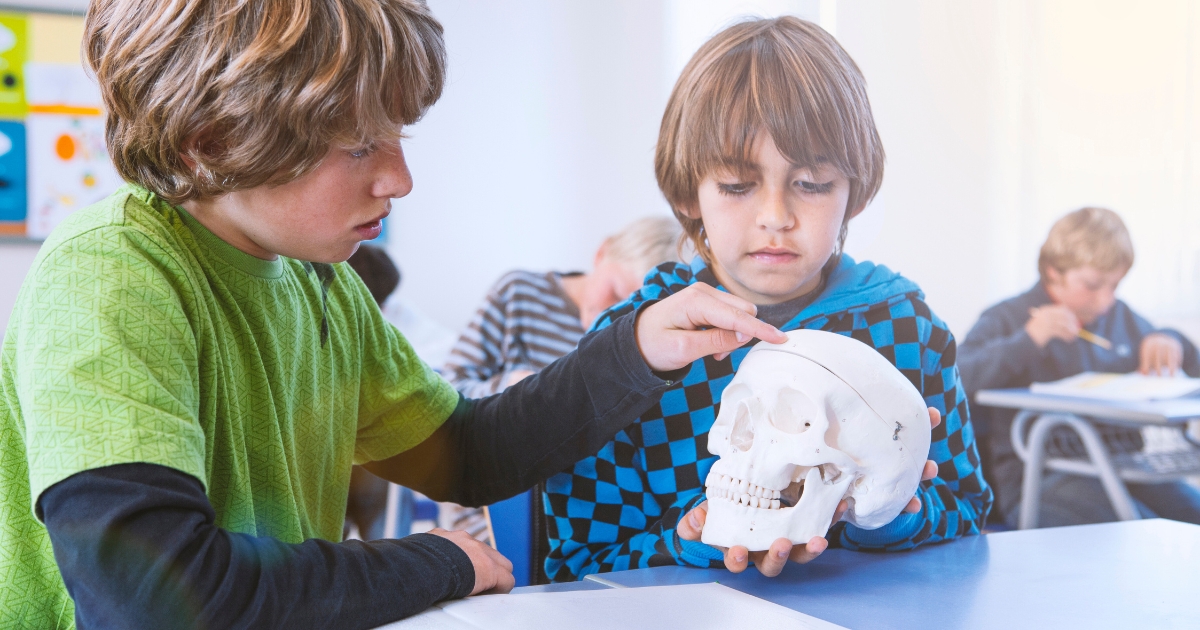Anthropology is the study of people, past and present. It offers a fascinating window into what it means to be human. For a 5th grader, this field can feel vast and complex, but it doesn’t have to be. By breaking it down into fun, hands-on activities, you can teach anthropology to kids in a way that sparks their curiosity and broadens their worldview. It’s about more than just memorizing facts about ancient civilizations; it’s about understanding different cultures, recognizing our shared humanity, and developing critical thinking skills.
Introducing these concepts through engaging 5th grade anthropology projects can transform your homeschool curriculum, making learning an adventure of discovery. These projects encourage students to ask questions, make connections, and see the world from new perspectives.
The beauty of teaching anthropology in a homeschool environment is the flexibility to go beyond textbooks. You can tailor lessons to your child’s interests, whether they are fascinated by ancient tools, modern-day cultural traditions, or the languages people speak. This subject naturally integrates with other disciplines like history, geography, art, and even science. Imagine your child not just reading about cultural artifacts but creating their own, or not just learning about family structures but mapping their own family tree and seeing how it connects to a larger cultural story.
The goal is to make anthropology tangible and relevant to their own lives, turning abstract concepts into concrete experiences. This approach helps build empathy and a deep appreciation for the diversity of human experience.
Exploring Cultural Anthropology Through Everyday Life
Cultural anthropology focuses on the shared beliefs, behaviors, and customs of groups of people. It’s about understanding how different societies live, think, and interact. For a 5th grader, the best way to grasp these ideas is by connecting them to their own world. You don’t need to travel far to find culture; it’s all around us in our food, our holidays, our stories, and our daily routines. Fun anthropology lessons for homeschool can start right in your kitchen or living room. By examining the familiar, students learn the basic methods of an anthropologist: observation, questioning, and comparison. This hands-on approach demystifies the subject and shows that anthropology is a living, breathing field of study that is relevant to everyone.
These projects are designed to be interactive and adaptable, allowing you to scale the complexity based on your child’s engagement and understanding. They encourage students to become “cultural detectives,” piecing together clues about their own culture and the cultures of others. As they work through these activities, they will develop important skills like interviewing, note-taking, and presenting their findings. The goal is to cultivate an attitude of respectful curiosity.
When teaching anthropology to kids, it’s crucial to emphasize that “different” does not mean “better” or “worse.” Instead, it’s about appreciating the wide spectrum of human ingenuity and expression. These activities provide a framework for exploring those differences in a positive and educational way.
Here are some 5th grade anthropology projects that explore cultural anthropology:
- Create a Cultural Food Journal: Food is a cornerstone of culture. Have your child keep a food journal for one week, documenting everything they eat. For each meal, they can research the origins of the ingredients. Where does rice come from? Who first domesticated chickens? This can lead to discussions about global trade, agriculture, and how different cultures have influenced the foods we eat today. To take it a step further, choose a specific country each month. Research its traditional cuisine, cook a few dishes together, and discuss the cultural significance of certain foods or mealtime rituals.
- “A Day in the Life” Interview Project: This project teaches valuable interviewing and observation skills. Have your child interview a grandparent, an older neighbor, or a family friend about what a typical day was like when they were ten years old. What games did they play? What were their school and home responsibilities? What technologies did they have? Afterward, your child can write a comparative report or create a presentation comparing their own daily life to that of the interviewee. This highlights how culture and society change over time, even within their own community.
- Map Your Local Community’s Culture: Go for a walk or drive around your town with the specific goal of looking for signs of culture. Take pictures of different types of architecture, public art like murals or statues, restaurants with international cuisine, and places of worship. Back home, create a large map of your community and pin the photos to their locations. Discuss what these elements say about the people who live there. Does your town have a strong historical identity or a diverse mix of influences? This project teaches kids to “read” their environment for cultural clues.
- Explore Global Holidays and Celebrations: Choose five different holidays from five different cultures around the world (e.g., Diwali, Lunar New Year, Hanukkah, Eid al-Fitr, Day of the Dead). For each one, research its origins, traditions, special foods, and meaning. Your child can create a “Holiday Passport,” with a page for each celebration detailing their findings. For an artistic touch, they can create a craft associated with each holiday, like making a paper lantern for Lunar New Year or decorating a sugar skull for Day of the Dead. This project emphasizes the universal human need for celebration and ritual.

Stepping Back In Time With Archaeology Projects
Archaeology is a subfield of anthropology that allows us to understand past human cultures by studying the material objects they left behind. For kids, the idea of digging up ancient treasures is inherently exciting. While you might not be excavating a real historical site, you can simulate the experience with some creative 5th grade anthropology projects.
These activities teach the core principles of archaeology: careful excavation, documentation, and interpretation. Students learn that every object, from a simple pottery shard to a discarded tool, can tell a story about the people who made and used it. This process helps them develop patience, attention to detail, and the ability to draw conclusions from evidence.
Teaching these concepts helps a child think like a scientist. They learn that archaeology isn’t just about finding things; it’s about understanding the context in which they are found. An object’s location, its position in the soil, and what it’s found with are all crucial pieces of the puzzle. These projects are designed to show the methodical work that goes into reconstructing the past. By engaging in these simulations, students gain a deeper appreciation for the artifacts they see in museums. They will understand that each item represents a fragment of a human story, painstakingly recovered and analyzed by archaeologists.
This perspective brings history to life, transforming it from a collection of dates and names into a rich tapestry of human experience.
- Backyard “Dig Site” Simulation: This is a classic and highly effective project. Choose a small area in your yard or use a large plastic tub or sandbox. Bury a variety of “artifacts” that represent a fictional culture. You can use items like pottery shards (from a broken terracotta pot), old buttons, sea shells, chicken bones (cleaned and dried), and handmade “tools” from stone or wood. Create a grid system over the area using string and stakes. Have your child excavate one square at a time using tools like small trowels, brushes, and dustpans.
- Documentation is Key: Teach them to photograph and map the location of each artifact before removing it.
- Artifact Cataloging: Once excavated, each item should be cleaned, measured, and cataloged with a description and a drawing.
- Interpretation: After the dig is complete, ask your child to interpret their findings. What can they infer about the people who lived there? What did they eat? What kind of technology did they have?
- Recreate Ancient Pottery: Pottery is one of the most common artifacts found at archaeological sites because it preserves well. Research the pottery-making techniques of an ancient culture, such as the coil method used by the Ancestral Puebloans or the pinch pot method common in many early societies. Using air-dry or oven-bake clay, have your child create their own pots using these ancient techniques. They can then decorate them with patterns and symbols inspired by the culture they studied. This hands-on activity connects them directly to the skills and artistry of past peoples.
- Build a “Midden” Garbage Analysis: A midden is an archaeological term for a trash heap. Archaeologists learn a tremendous amount about a culture from what its people threw away. You can simulate this by creating a “midden” in a clear container. Over the course of a week, place layers of your family’s (clean and safe) trash inside, with a layer of sand or soil separating each day. At the end of the week, your child can carefully “excavate” the midden layer by layer. What can they learn about your family’s diet, consumption habits, and activities from the garbage? This project powerfully illustrates the archaeological principle of stratigraphy (the idea that deeper layers are older) and how artifacts tell stories.
- Investigate “Rock Art” and Symbolism: Many ancient cultures left behind petroglyphs (rock carvings) and pictographs (rock paintings). Research examples of rock art from different parts of the world, like Cueva de las Manos in Argentina or Newspaper Rock in Utah. Discuss the possible meanings of the symbols. Were they telling stories, marking territory, or recording spiritual visions? Then, have your child create their own “rock art.” They can find smooth, flat rocks and paint them with symbols that tell a story about their own life, family, or a fictional event. This explores how humans have used symbols to communicate for thousands of years.
Understanding Our Human Story Through Biological Anthropology
Biological anthropology, also known as physical anthropology, delves into the story of human evolution and biological variation. It seeks to answer fundamental questions: Where did we come from? How has our species changed over time? Why do people look different around the world? These are big questions that can be made accessible and fascinating for a 5th grader. Fun anthropology lessons homeschool in this area focus on observation, comparison, and understanding the incredible adaptability of the human body.
By studying our own biology and comparing it to that of our primate relatives and early human ancestors, students can see their place in the grand sweep of natural history. This branch of anthropology connects directly to biology and life sciences, providing a holistic view of what makes us human.
The key to teaching biological anthropology to kids is to make it personal and tangible. Instead of just looking at diagrams of skeletons, projects can involve measuring their own bodies, observing primates, or tracking inherited traits through their family.
These activities remove the intimidation factor from scientific concepts like evolution and genetics, framing them as a story of survival, adaptation, and connection. It’s a chance to explore the amazing machine that is the human body and appreciate both our uniqueness as a species and the diversity within it. This fosters a scientific mindset while also building a sense of wonder about our shared biological heritage. Students learn that our physical traits are the result of a long and complex journey, shaped by environment and history. This understanding helps build a foundation for more advanced scientific learning in the future.
The Power Of Language And Communication
Linguistic anthropology explores the central role that language plays in human life. It’s not just about grammar and vocabulary; it’s about how language shapes our thoughts, defines our communities, and transmits culture from one generation to the next. For a 5th grader, this can be an exciting journey into the world of words, symbols, and secret codes. Projects in this area help them see language as a dynamic and creative tool. They can learn how languages evolve, how new words are born, and how people communicate without speaking.
This subfield offers endless opportunities for fun and creativity, from inventing a new language to studying the “language” of emojis. These activities are excellent for developing communication skills and an appreciation for the diversity of human expression.
Teaching linguistic anthropology to kids encourages them to listen more carefully to the world around them. They begin to notice regional dialects, the use of slang among friends, and the formal language used in different settings. They can explore how storytelling traditions preserve history and values, or how writing systems developed across different civilizations. A 5th grade anthropology project centered on language can be as simple as comparing different alphabets or as complex as analyzing how advertisements use words to persuade people.
By studying language, students are studying the very fabric of culture. They learn that the words we use are packed with meaning, history, and identity, providing a powerful lens through which to understand ourselves and others.





